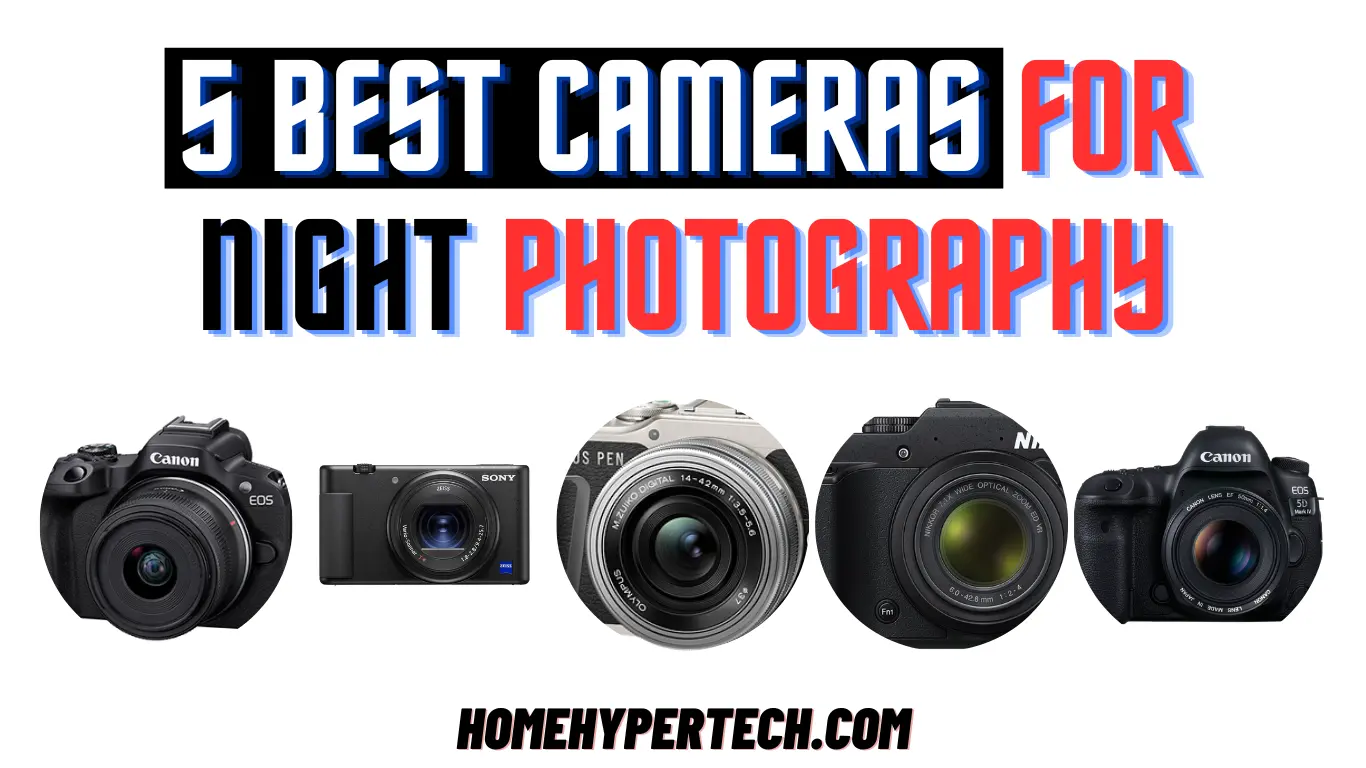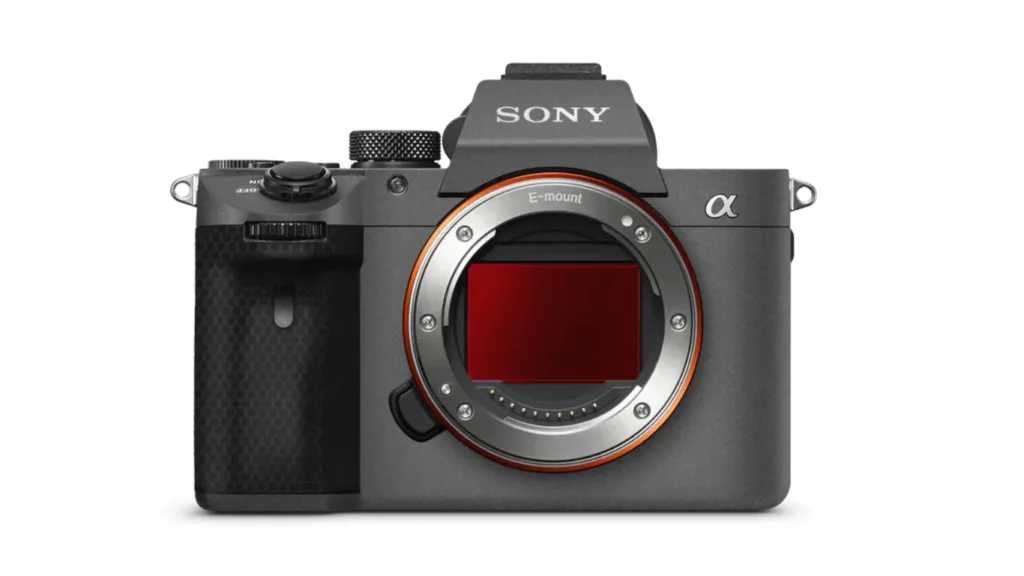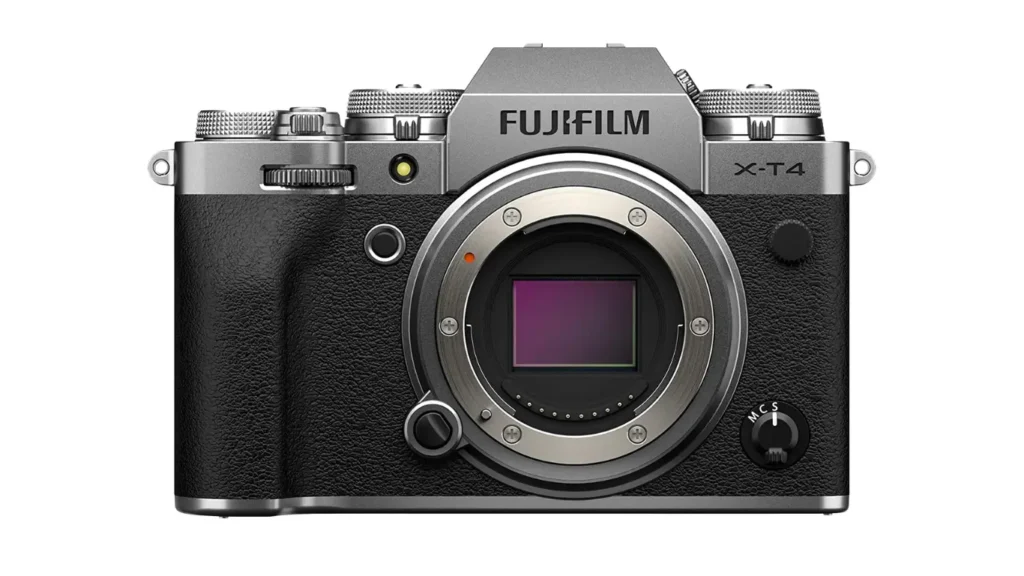5 Best Cameras for Night Photography

Night photography opens up a whole new world of creative possibilities. Capturing stunning images in low light conditions requires the right equipment, and choosing the best camera is crucial.
In this article, we will explore the top five best cameras for night photography that excel in night photography, allowing you to capture breathtaking shots even in challenging lighting situations.
Understanding Night Photography
Night photography involves capturing images in low light or nighttime conditions. It requires a different approach compared to daytime photography. During the night, the available light is limited, and the camera’s ability to capture details in low light becomes essential. To achieve impressive night photos, you need a camera that excels in low-light performance, offers advanced features, and provides excellent image quality.
My Top 5 Best Cameras for Night Photography
- Canon EOS R5
- Nikon Z7 II
- Sony A7S III
- Fujifilm X-T4
- Canon 6D Mark II
Now We Will Discuss One by One
1. Canon EOS R5

The Canon EOS R5 is a flagship mirrorless camera that has garnered significant attention since its release. Packed with cutting-edge technology and innovative features, the EOS R5 caters to both professional photographers and enthusiasts who seek uncompromising image quality and advanced capabilities.
Key Features of Canon EOS R5
- High-Resolution Sensor
- Advanced Autofocus System
- Impressive Image Stabilization
- 8K Video Recording Capability
- Dual Pixel CMOS AF II
- High-Speed Continuous Shooting
- Weather-Sealed Body
Pros of Canon EOS R5
- Outstanding Image Quality
- Versatile Autofocus System
- Excellent Image Stabilization
- Cutting-Edge Video Capabilities
- Dual Memory Card Slots
- Intuitive User Interface
Cons of Canon EOS R5
- Pricey Investment
- Potential Overheating Issues
- Large File Sizes
- Limited Battery Life
2. Nikon Z7 II

When it comes to professional mirrorless cameras, Nikon has always been a trusted brand. The Nikon Z7 II, the successor to the popular Z7, continues to impress photographers and videographers with its advanced features and exceptional performance.
This is a full-frame mirrorless camera that combines cutting-edge technology with Nikon’s renowned craftsmanship. It boasts a high-resolution sensor, advanced autofocus system, and robust build quality, making it a versatile tool for photographers and videographers alike. Whether you are capturing stunning landscapes, fast-moving action, or professional-grade videos, the Z7 II has got you covered.
Key Features of Nikon Z7 II
- 45.7-megapixel back-illuminated CMOS sensor
- Advanced autofocus system with 493 focus points that cover approximately 90% of the frame.
- 5-axis in-body image stabilization (IBIS) system
- Dual EXPEED 6 image processors
- Robust and durable camera bodies
- Capture 4K UHD footage at up to 60 frames per second
- Wide range of connectivity options
Pros of the Nikon Z7 II
- Exceptional image quality thanks to the high-resolution sensor.
- Advanced autofocus system for accurate and reliable subject tracking.
- Effective in-body image stabilization for sharper handheld shots.
- Robust build quality, ensuring durability in various shooting conditions.
- Impressive video capabilities, including 4K UHD recording.
- Versatile connectivity options for seamless file transfer and remote control.
Cons of the Nikon Z7 II
- Limited native lens selection compared to some competitors.
- Relatively shorter battery life compared to DSLRs.
- The menu system can be complex for first-time Nikon users.
- The camera body is slightly larger and heavier than some mirrorless counterparts.
3. Sony A7S III

Sony A7S III, a revolutionary full-frame mirrorless camera that caters to the needs of professional videographers and photographers. With its impressive features and exceptional performance, the Sony A7S III is a game-changer in the industry.
Key Features of Sony A7S III
- Impressive Low-Light Performance
- High-Resolution Video Recording
- Advanced Autofocus System
- Exceptional Image Quality
- Extended Battery Life
- Robust and Weather-Sealed Design
- Versatile Connectivity Options
- This Cemera system is user-friendly and also has an OLED electronic viewfinder for a clear and detailed preview.
Pros
- Exceptional low-light performance
- Impressive video capabilities with 4K 120p recording
- Advanced autofocus system for precise subject tracking
- Excellent image quality with a wide dynamic range
- Extended battery life for prolonged shooting sessions
- Robust and weather-sealed build quality
- Versatile connectivity options for seamless workflow integration
Cons
- Lower resolution compared to some competitors
- Limited megapixels for detailed still photography
- Price may be prohibitive for entry-level users
- Limited touchscreen functionality
4. Fujifilm X-T4

The Fujifilm X-T4 is a powerful and versatile mirrorless camera that caters to the needs of both professional photographers and enthusiasts. With its impressive image quality, advanced features, and robust build, the X-T4 stands out as a top contender in the market.
Key Features of Fujifilm X-T4
- The X-T4 employs Fujifilm’s renowned X-Trans CMOS 4 sensor and X-Processor 4
- The X-T4 is distinguished by its in-body image stabilisation (IBIS) system.
- X-T4 offers impressive burst shooting capabilities,continuous shooting speed of up to 15 frames per second (fps)
- It supports 4K video at up to 60 frames per second.
- X-T4 boasts weather-sealing, making it resistant to dust, moisture, and low temperatures
Pros of Fujifilm X-T4:
- Excellent image quality
- Impressive autofocus performance
- Versatility in shooting scenarios
- Robust build quality
- Extensive lens selection
Cons of Fujifilm X-T4:
- Relatively expensive
- Limited battery life
- Bulky design
- Complex menu system
- Some video limitations
5. Canon 6D Mark II

The Canon 6D Mark II is a full-frame DSLR camera that succeeds its predecessor, the Canon 6D. It features a 26.2-megapixel full-frame sensor, allowing for exceptional image quality with vibrant colors and rich details. The camera incorporates Canon’s Dual Pixel CMOS AF technology, ensuring precise and fast autofocus performance. Additionally, it comes with a vari-angle touchscreen LCD, providing versatility in framing and reviewing shots.
Key Features of Canon 6D Mark II
- 26.2-megapixel full-frame sensor for exceptional image quality
- Dual Pixel CMOS AF technology for improved autofocus performance
- Vari-angle touchscreen LCD for versatile framing and easy operation
- Enhanced connectivity options for seamless sharing and remote control
- Digic 7 image processor for fast and responsive performance
- Impressive ISO performance and low-light capability
- High-resolution images suitable for large prints and cropping
- Advanced autofocus system with wide coverage
- Wireless connectivity for quick and convenient image transfer
Pros of Canon 6D Mark II
- Exceptional image quality with a high-resolution full-frame sensor
- Advanced autofocus system for precise and fast focusing
- Versatile articulating LCD for flexible framing and easy operation
- Seamless wireless connectivity options for convenient image sharing
- Impressive low-light performance for capturing stunning images in challenging conditions
Cons of Canon 6D Mark II
- Limited dynamic range compared to some competing cameras
- Slower burst shooting speed for capturing fast action
- Lack of 4K video recording capability
- Single SD card slot, which may limit storage options in some scenarios
- Relatively heavy body, which may be less comfortable for extended use
Comparison with these Features
Sensor
The sensor is a critical camera component that captures the light and converts it into a digital image. It determines the camera’s ability to capture details, dynamic range, and low-light performance. When considering a camera for night photography, a larger sensor size is generally preferred as it allows for better light-gathering capability and improved image quality in low-light conditions. Full-frame sensors are known for superior low-light performance, while APS-C and Micro Four Thirds sensors also offer excellent results.
| CAMERAS | SENSOR SPECIFICATIONS |
| 1. Canon EOS R5 | 45 Megapixel Full-frame CMOS Sensor |
| 2. Nikon Z7 II | Full-frame 45.7-megapixel CMOS sensor |
| 3. Sony A7S III | 12.1-megapixel full-frame Exmor R CMOS sensor |
| 4. Fujifilm X-T4 | 26.1-megapixel APS-C X-Trans CMOS 4 sensor |
| 5. Canon 6D Mark II | 26.2-megapixel full-frame CMOS sensor |
Processor
The camera’s processor is responsible for handling the data captured by the sensor and performing various image processing tasks. It affects the camera’s speed, performance, and image quality. A powerful processor can handle higher ISO settings, reduce noise, and process images quickly. Look for cameras with advanced processors that can handle the demands of night photography, ensuring smooth operation and high-quality output.
| CAMERAS | PROCESSOR SPECIFICATIONS |
| 1. Canon EOS R5 | DIGIC X Image Processor with an ISO range of 100-51200 |
| 2. Nikon Z7 II | EXPEED 6 image-processing engine with ISO range of 64-25,600 |
| 3. Sony A7S III | BIONZ XR image processor |
| 4. Fujifilm X-T4 | X-Processor 4 |
| 5. Canon 6D Mark II | DIGIC 7 image processor |
Video
For those interested in capturing videos during night photography, video capabilities become crucial. Look for high-resolution video recording cameras, preferably in 4K or higher. Additionally, consider cameras with features like high ISO performance, image stabilization, and advanced autofocus for smooth and stable video footage even in low-light conditions.
| CAMERAS | VIDEO SPECIFICATIONS |
| 1. Canon EOS R5 | 8K UHD 4320p |
| 2. Nikon Z7 II | 4K UHD video recording at up to 60-120 frames per second |
| 3. Sony A7S III | 4K UHD recording up to 120fps |
| 4. Fujifilm X-T4 | 4K UHD recording up to 60fps, F-Log and HLG recording options |
| 5. Canon 6D Mark II | Full HD recording up to 60fps, 4K time-lapse capability |
Autofocus
Autofocus performance is crucial for night photography, as accurately focusing in challenging lighting situations can be tricky. Look for cameras with advanced autofocus systems that excel in low-light conditions. Features like phase detection autofocus (PDAF) and low-light sensitivity assist in achieving precise focus. Cameras with more autofocus points and improved tracking capabilities offer better results when capturing moving subjects at night.
| CAMERAS | AUTOFOCUS SPECIFICATIONS |
| 1. Canon EOS R5 | 5,940 selectable autofocus points – AF System |
| 2. Nikon Z7 II | 493 on-sensor phase-detection autofocus points |
| 3. Sony A7S III | Fast Hybrid AF system with 759 phase-detection points and 425 contrast-detection points |
| 4. Fujifilm X-T4 | Intelligent Hybrid AF system with 425 phase-detection points and low-light AF down to -6EV |
| 5. Canon 6D Mark II | Dual Pixel CMOS AF system with 45 cross-type AF points |
Screen
The camera’s screen, also known as the LCD display, is where you preview and review your images. When shooting at night, having a screen with good visibility in low-light conditions is important. Look for cameras with bright and high-resolution screens that offer good color representation and clarity. Some cameras also feature tilting or articulating screens, which allow for easier composition and shooting from various angles.
| CAMERAS | SECREEN SPECIFICATIONS |
| 1. Canon EOS R5 | 3.2-inch |
| 2. Nikon Z7 II | 3.2-inch tilting LCD touchscreen |
| 3. Sony A7S III | 3.0-inch tiltable LCD touchscreen with 1.44 million dots |
| 4. Fujifilm X-T4 | 3.0-inch vari-angle LCD touchscreen with 1.62 million dots |
| 5. Canon 6D Mark II | 3.0-inch vari-angle LCD touchscreen with 1.04 million dots |
Connectivity
Connectivity options are essential for transferring images, remote shooting, and sharing your night photography. Look for cameras with built-in Wi-Fi, Bluetooth, or NFC capabilities. These features enable you to transfer images wirelessly to your mobile devices, control the camera remotely, and easily share your night shots on social media platforms. Additionally, some cameras offer USB or HDMI ports for direct connections to other devices or external monitors.
Remember to consider these aspects when evaluating cameras for night photography, as they play a significant role in achieving outstanding results in low-light conditions.
| CAMERAS | CONNECTIVITY SPECIFICATIONS |
| 1. Canon EOS R5 | Built-in Wi-Fi and Bluetooth |
| 2. Nikon Z7 II | Built-in Wi-Fi and Bluetooth for wireless image transfer |
| 3. Sony A7S III | Wi-Fi, Bluetooth, USB Type-C, HDMI Type-A, headphone, and microphone ports |
| 4. Fujifilm X-T4 | Wi-Fi, Bluetooth, USB Type-C, HDMI micro Type-D, headphone, and microphone ports |
| 5. Canon 6D Mark II | Wi-Fi, NFC, GPS, Bluetooth, USB 2.0, HDMI mini Type-C, headphone, and microphone ports |
Amazon Prices
Latest Prices in 2023
- Canon EOS R5 – $3399
- Nikon Z7 II – $2696
- Sony A7S III – $3498
- Fujifilm X-T4 – $1379
- Canon 6D Mark II – $1199
Important Points to Select a Camera for Night Photography
When it comes to night photography, selecting the right camera is crucial for capturing stunning images in low-light conditions. Here are some key points to consider when choosing a camera specifically for night photography:
1. Full-Frame Sensor
2. ISO Range
3. Bulb Mode
4. Dynamic Range
5. Manual Settings
Other Points also included Night Photography
- Low-Light Performance: A camera with good low-light performance is crucial for night photography. Look for models that have larger sensors, high ISO capabilities, and effective noise-reduction features.
- Image Stabilization: Nighttime conditions often require longer exposure times, which can result in camera shake and blurry images. Image stabilization systems help counteract camera movement and produce sharper images.
- Autofocus Performance: Fast and accurate autofocus is essential for capturing sharp images in challenging lighting conditions. Look for cameras with advanced autofocus systems that excel in low light.
- Specialized Night Photography Features: Some cameras offer specific features tailored for night photography, such as long exposure modes, built-in intervalometers, and astrophotography capabilities.
By considering these factors – a full-frame sensor for improved image quality, a wide ISO range for low-light performance, bulb mode for extended exposures, a good dynamic range for balanced exposures, and comprehensive manual settings for creative control – you’ll be able to select a camera that is well-suited for capturing stunning night photography.
Remember to also consider other factors like lens selection, image stabilization, and additional features that may enhance your night photography experience.
Conclusion
In conclusion, Canon EOS R5, Nikon Z7 II, Sony A7S III, Fujifilm X-T4, and Canon 6D Mark II are all excellent cameras for night photography. The EOS R5 and Z7 II offer high-resolution sensors, advanced autofocus, and in-body image stabilization. The A7S III excels in low-light performance with its impressive ISO range and superb video capabilities. The X-T4 provides excellent image quality and features like image stabilization and a versatile lens system. The 6D Mark II offers good low-light performance and affordability. Ultimately, the best camera for night photography depends on individual preferences, shooting style, and budget.
FAQS
Q: What is a good camera for night sky photography?
A: Cameras with larger sensors like full-frame, APS-C, or Micro Four Thirds are recommended for better low-light performance and capturing details in the night sky.
Q: Can you suggest an affordable camera for night sky photography?
A: There are budget-friendly options available for night sky photography. Look for cameras with larger sensors within your price range to improve low-light performance and image quality.
Q: What camera is suitable for night street photography?
A: For night street photography, consider cameras with good low-light capabilities, such as larger sensors like full-frame, APS-C, or Micro Four Thirds. These sensors can capture details and handle challenging lighting conditions effectively.

I am a content writer and affiliate marketer with a passion for crafting engaging and informative content that drives traffic and sales. With years of experience in the industry, I have honed my skills in SEO, social media marketing, and email marketing to help businesses reach their target audience and achieve their goals.
